The Ways of Women
- Barbara Lewis
- Nov 26, 2018
- 26 min read
Part One: Whatever did they do all day?
I once shared a home with a beautiful, fat-bellied, white Persian cat named Penny. I named him Penny because, at age nine, I believed that all cats were female and all dogs male. My parents gave him to me. He came out from beneath the Christmas tree, an astonishing surprise. I loved Penny with a passion. He taught me that language was unnecessary for communicating the essentials of love, which came in handy years later when I became the mother of a newborn. Except for teaching me about love, Penny spent an aimless life. When he wasn’t on my bed purring, affectionately poking his nails into my chest, he would lay around on windowsills whiling away his lazy afternoons. I often feel like him these days. As an empty-nester living in a quiet neighborhood perched on a bluff overlooking the water, my days lack a sense of urgency. I’m busy like a lot of productive retirees —babysitting grandchildren, volunteering, taking classes, visiting friends. I’m not always at home, but when home, I’m like a lazy cat shifting from windowsill to windowsill, gazing at the great outdoors, flicking my tail or purring.
Annie Dillard once wrote, “How we spend our days is, of course, how we spend our lives.” What does the content of my days say about me? I take walks for exercise! I garden for fun! Granted, I could live another sort of life—raise farm animals like my ancestors, spin yarn or make my own butter. But that’s my point: I get to choose. Right now, for instance, I’m choosing to recline on my bed while typing on my computer. Later on, I will see what I can cook up in the kitchen. There’s broccoli and a pork chop in the refrigerator, I think. These days I like to draw, and so I might work on a portrait drawing, or finish the quilt of perky horses I’ve been making for my grandson. I might call Aunt Jayne to see if the pain in her leg’s any better, and then send an email to my childhood friends, Robin and Connie, about visiting them in Virginia, where I will hopefully take them to Steeles Tavern! Before going to bed tonight, I might finish reading A Gentleman from Moscow, or watch a rerun of The Walking Dead with Brian.
My days can also be measured by what I don’t do. I don’t haul water from a well. I don’t keep a fire going. I don’t pluck chickens. I don’t milk cows. I have access to stores that sell food and clothes and other possessions. I don’t need to make everything I use. Machines save me copious hours of toil! I often order what I need online and so I don’t even need to go outside except to pick up a package.
I wake long after dawn, slip on my bathrobe, and use the toilet inside my house. I search for my eyeglasses. Did I leave them on the table by the bed? In the living room? By the sink? When the search for my eyeglasses has ended, I make my bed. (My friend, Rebecca, made me the beautiful yellow quilt that covers the bed and so I think about her most mornings.) I then go into the kitchen, turn on the faucet and drink a glass of water. (My daughter, Heather, once lived in a yurt without running water, and so I often think of her when I let the water run.) To make coffee I use an electric kettle from Target that I ordered off Amazon. I often fry two eggs in a non-stick pan over the low flame of a gas stove. Today I will eat my fried eggs with an avocado and fermented carrots and fried potato. I carry my breakfast and coffee outside with an old-fashioned, non-digital book, cocooning myself in a Pendelton blanket on the small couch underneath the roofed porch. The crisp air and boistrous birds wake me up. Back inside, I do yoga, check my emails, take a shower and get dressed—or none of the above because some days I choose to be a lazy cat with no agenda, waving my tail at the world.
One thing’s for certain: I’m no pioneer lady. No chickens or cows or feeding a small army at the crack of dawn for me. I wouldn’t starve or freeze to death if I just stayed in bed. I can drive to a local restaurant and order an omelet with goat cheese and salsa for breakfast. What would my ancestors think of me?
Comparing how I spend my minutes now with the life of a young mother of the eighteenth-century Virginia frontier isn’t quite fair. I was busy as a young mother, working, studying, and raising three kids, but if I lived back then at my age now I'd be in the category of the arthritic old woman snapping beans on the porch. Even so, in my younger years, I didn't have to make candles from hog fat in order to see at night. My kids didn’t go hungry if I forgot to lock the chickens in the barn. I alwasy had keys to the car.
What exactly was the life of my ancestral pioneer woman all about? What did she do all day? What tasks did she perform? What objects did she touch? What did she do with the minutes of her day, the days of her years? In order to imagine her, I need to see her hoisting, climbing, scrubbing, stirring—using her body to create a busy life.
Researching women of the colonial era turned up a lot of generalities, but I wanted specifics. You can write that women sewed in the past but never explain how to thread a needle. What if you've never seen a needle? How would you know about the hole at the end where the thread goes through? I mention this to my daughter, Heather, and she replied, "If you were going to describe what you do today to future generations, it would be the things you wouldn't think to mention that would matter the most. You wouldn't think to mention them becasue they're so commonplace."
So I'm left with generalities--for now. Except that I want to zero in on one particular woman: Mary Steele, the second wife of my ancestor, Robert Steele.
Like most women of her generation, our pioneer woman, Mary Steele, tended the sick, consoled the bereaved, and prepared the dead for burial. She cooked and preserved food. She made soap. She cleaned, butchered, and prepared game—venison, duck, turkey, possum, squirrel, rabbit. She spun thread and wove cloth and sewed and mended garments. She milked cows, churned butter, and chased chickens. She bartered any extra food from the vegetable garden for needed household goods. She assumed responsibility for young children, supervising their religious instruction and teaching them how to read and write. As her daughters grew older she’d be busy teaching them the household skills that they would need to run a big family household one day.
Making girls into good mothers and housewives. How's that for a generality? But motherhood was the primary role of women in colonial times and large families were common. When we talk about what any of these women did all day, we have to include having babies and raising children. (Our mother, Mary, had four stepsons and three daughters.) But having babies and raising children meant additional chores and activities, and we’re shifting focus to activities here—on the actual actions of a woman in the 1760s. Bathing a baby meant fetching water, heating water over a wood fire, and disposing of that same water outside. Bathing a baby also meant making soap from animal fat in an iron cauldron, and producing the clothing for the baby to wear after the bath—which meant raising sheep and flax, and then spinning and weaving the wool and the flax into cloth. Bathing a baby might take ten minutes, but getting everything ready to bath a baby might take days or weeks or even months. You get the picture. Motherhood meant running a small business.
Let’s hope the husband made the bathtub and grew the flax, otherwise there will be no time for nursing the baby. Because nursing a baby takes a lot of time! Our mom nurses her baby for twenty minutes every two or three hours during the day, and twice during the night. This turns out to be about five hours of nursing per day. Our mother isn’t eager to wean her child from a steady and safe supply of nutrients, or to give up the natural birth control that nursing provides her. She has nursed her daughter for more than a year.
A woman can be quite productive while nursing a baby. We have to keep in mind that nursing mothers engaged in multitasking. As long as she doesn’t hurt the child, she can do various household chores while holding a baby to the breast. She can feed and chase chickens, for example. She can pick clothes off the floor with her toes like I did. She can certainly teach a child to read the bible while nursing their sibling. Bread can be kneaded with one hand. If she wraps her arms around her child while sitting, she can knit or do cross-stitching while nursing. Making a bed while holding a baby should be an acquired skill for any mother.
Of course, not every woman back in the 1760s took the same amount of time to accomplish her chores. Some were speed-demons with certain tasks, whisking through food preparations in order to help their husbands in the field or to make a quilt with friends. Some spent more time visiting relatives then dipping candles or boiling the laundry. But making allowances for the differences between individual women, we can still make a stab at figuring out how the average woman spent her days.
First of all, she mostly stays home. The husband goes about the community, but our pioneer wife remains on the farm. She runs her own roost. Men and women work together but usually within separate spheres. In the household of our pioneer woman, there are two family economies, two lines of production, two areas of management, and two separate avenues of utilizing resources. For instance, the men break flax, shear sheep, and perform other supportive services, while our pioneer lady and the other women in the community share primary responsibility for the production of cloth. During harvest time, women will join the men in the fields.
Are we up for a little time travel now?
We find her standing in the kitchen at the wide board she uses for a table, wispy hairs untangled from her cap surrounding her face, a soiled apron tied around her waist, and a baby slung on her hip. She’s barefoot. Looking around, we see only a few pieces of furniture, a chest, and two benches, and seasonal clothing hung on the walls. Several quilts are folded neatly on top of the chest. A large basket of dried corn rests on one of the benches. To the back of the house, we find a single bedroom with a trundle bed. The baby sleeps on the trundle. The parents' mattress is stuffed with corn husks. The older kids and hired servants sleep upstairs in the loft.
In the wide hearth, pots hang from a crane—a wrought iron bracket attached to the back wall that can swing over the fire. A medium-sized cast iron pot sits to the side of the hearth. Her mother passed along this pot to her when she married. Several other pots and skillets are placed near the fire, ready for use. One of her favorites is a shallow pan that stands on three legs with a long handle. There’s also an iron fry pan sitting to the side of the hearth that has a three-foot-long handle. A large iron cauldron sits over the fire. She uses trivets of assorted sizes, both high and low. She’s placed a short-legged one close to the fire, and a long-legged trivet she uses to simmer food is positioned away from the heat. She’s reheating food now, not cooking a meal. When cooking, she uses tongs, shovels, forks, bellows, toasting racks, forks, and warming pans. She’s a master chef, the badass cook of the kitchen.
She wears a short blue gown of linsey-woolsey, a coarse twill fabric woven with a linen warp and a woolen weft, and also a linsey petticoat, homespun and homemade. She’s not a fancy dresser. Linsey-woolsey was valued for its warmth, durability, and cheapness, but not for its looks. She owns one nice outfit, which she made herself, after purchasing the material from overseas. During the winter, she wears coarse homemade shoes. She keeps her good shoes in the chest with the fancier quilts.
Note that the husband normally wears a hunting shirt—a loose-fitting top that’s open in front and reaches almost to his knees. This shirt was made by his wife. The shirt has large sleeves, and a cape to protect his shoulders in bad weather. To his belt, he ties his mittens, bullet-pouch, tomahawk, and knife and sheath. He wears leather leggings, and moccasins or sometimes boots, with a felt hat on his head. He dresses like a landed gentleman at times with a broad-backed cloth coat with flap-pockets, and a waist-coat extending to his knees. He inherited this outfit from his father. He seldom wears his father’s short breeches with brass knee-buckles and garters and coarse leather shoes, but he can't bring himself to sell them.
The wife wakes up, dresses, and then goes outside to the outhouse: twenty minutes, no less. First, she finds her shoes, her shawl. She wants to sneak out before anyone else—or she will be taking care of everyone else’s needs before her own! It’s barely dawn, mist rising from the fields; the rooster crows. Since the first frost arrived in the night, she will need to break the ice in the water bucket in order to take a drink. She notices the cat perched on the fence railing and she stops to run her hand along its back while the creature purrs, proudly raising a tail. She’s a woman of faith and so it’s her habit to say a prayer in the morning, but her eldest daughter has a raspy cough and no one in the family slept well last night, and so she keeps her prayer short and to the point: “Please, mend the girl!” She’s not really worried about her daughter. If she troubled herself about every cough in the house, she’d fret herself to death. Heading back to the house now, she notices a blue slip of sky emerging across the top of the mountains and even though she’s seen this view a thousand times, she sucks in her breath, indulging in a half-second of wonder. Then her husband throws open the front door and lifts up a crying baby as if she could gather the child in her arms while standing clear across the yard.
Back in the drafty kitchen, she nurses the youngster and then puts her down on the trundle in the back bedroom. She takes off her shawl, ties on her apron, and throws kindling on the fire before stirring the embers. When the flame licks up, she adds a piece of wood from the woodpile that her husband stacked by the hearth. She fills the kettle from the bucket of water her eldest son fetched for her last evening and places the kettle in the fireplace to steam. She hears the children stirring upstairs. They’ll be down soon and she still has a lot to do before the onslaught of half-awake boys and girls. She quickly sweeps the floor, opening the door to send the dust flying. Noticing the two hired men turning the horses out the barn, she raises a hand to wave, but the men don’t notice because the sun’s in their eyes. The hired men will join the family for breakfast, which she hurries to prepare now by taking down the bag of cornmeal from the shelf to pour into the large ceramic bowl—the bowl her sister gave her when she married six years ago. She thinks about her wedding day whenever she uses the bowl. The preacher coming and her friends laughing and her mother serving apple pie. She adds scalding water to the cornmeal in the bowl and stirs the mixture until moist. She will let the mixture stand for about an hour before spooning two or three tablespoons onto a hot griddle, a griddle made from an old hoe that she will grease with lard. She plans to cook breakfast when everyone’s done with their chores. Hoecakes are best served hot.
She goes outside again to feed the chickens, scattering food scraps while talking to the roosters and the hens. She secretly, or maybe not so secretly, loves the hens. As lively as any women she knows, the hens daily prompt her laughter. She also respects them for their diligence over their broods. After feeding the chickens, she milks the cow, warming her hands before grabbing her teats. She doesn’t love the cow as much as the chickens because she prefers perky friends, but she admires her for her patience and good nature. The family owes her a great deal for the milk and cheese she’s given them over the years. Our pioneer swats flies from her face as she sqeezes the teats and lets the milk hit the pail. From her stool, she watches her husband exit the house and head toward the field to join the hired men with the horses.
The warmth of the cabin greets her when she goes back inside, carrying eggs in her apron and slopping milk in a pail. She pokes at the fire again, adding more kindling. In the small bedroom off the kitchen, she changes the baby, telling her that she’s “a good, sweet, soul and a nice, little round-bellied, beautiful sweetheart.” She makes the bed while nursing the baby, pushing the trundle underneath with her shin before hollering upstairs to make sure that the older children are up and dressed now.
“Get to your chores you lazy rascals!” she shouts up the stairs.
When they climb down the ladder, she passes the baby to the eldest stepson, telling him that she just fed his baby sister and not to jostle her around or she’ll spit up her breakfast all down his shirt like she did yesterday.
The sun’s up and eager before the family sits down to eat. As on most days, breakfast proves noisily cheerful. To the hired men, she makes a joke at her husband’s expense about how he likes to have help on the farm just so he can tell his long-winded stories, which is a true joke because he’s not much of a talker, her husband. She pours the corn mixture over the surface of the hot, greased hoe that’s now a griddle, shaping the cakes until they’re an inch thick and almost perfectly round. The rich, warm aroma of corn cake fills the cabin as she browns the cakes over the fire. The hired men and her husband finish eating before the four boys and two little girls, including the sick eldest one, sit down on benches at the longboard to wait for hoecakes.
She gives thanks that her sick daughter has risen from the sick bed, smiling at her and touching her pale cheeks. The girl coughs, quickly covering her mouth with an old cloth her mother gives her. After breakfast, no one lingers at the table. As her husband and the hired men and the children scatter to their chores, she goes about cleaning up the kitchen. She allows her sick daughter to do her sums in the corner of the room and doles her chores out to her brothers, which they don’t appreciate. Our pionner has been up for three hours!
“Generations of colonial women,” wrote the American academic Charles E. Eliot, “cooked, carried water, washed and mended clothes, bore children in lonely peril and tried to bring them up safely through all sorts of physical exposure without medical or surgical help, lived themselves in terror of savages, in terror of the wilderness…and at last sank into nameless graves without any vision of the grateful day when millions of descendants should rise up and call them blessed.”
Oh, dear! Am I among the descendants that ought to rise up and bless these women? What a responsibility! But I do want to thank them. I really do. Thank you, my dead relatives! Thank you for keeping the world knit together during your years here. Thank you for rising before dawn, cooking and cleaning and sewing, birthing and nursing and raising a long line of babies that eventually gave birth—to me! I'm really gratefull.
Do you think they can still hear me?
Plant, pick, pickle. Spin, weave, sew. Cook. Cook. Cook. Without a strong and productive woman in the household, a family would’ve struggled to survive back in the day. If you’re here, thank a few women from your past for working their fingers to the bone.
Our Valley girl fed her family on food grown at home. She was infinitely adaptable. She raised vegetables no one ate back home in Londonderry. The tomato, squash, pole bean, corn, pumpkin, and even the Irish potato came from the American Indian. Early settlers didn’t steal these vegetables. They didn’t sneak into Indian camps and dig up growing plants from coveted gardens. An exchange of crops represented a level of cooperation, at least in the early days. Women planted Indian crops in their vegetable gardens because someone fed them these foods and showed them how to grow them. Stick a dead fish in the ground for fertilizer. Plant corn seed in the center of a mound. Place a winding bean vine strategically so that the vine will twist up the corn stalk. Surround the corn and vine with a wide-leafed squash to block out the weeds. The vegetable garden, located right outside our pioneer’s door, could be planted twice a year. The spring garden would provide peas and early cabbages while the late summer garden gave the family food straight into the winter. Our pioneer’s home had a cellar to store root vegetables, fruits, pickles, dairy products, and barrels of salted meat, and also hard cider. In cold seasons, fresh meat was placed there for short periods of time. She spent an awful lot of time raising and preserving food.
Some food was preserved by salting. To salt beans, for instance, place young, dry beans in a large stone jar. Layer with salt. Tie a coarse cloth over the top, and then a board. Weigh down the board to keep the whole thing closed off from the air. Keep in a dry cellar. Wash the beans you take out and let them lie in soft water for twenty-four hours. Boil them but don’t add any salt!
November comes around and our Valley lady needs to deal with a particularly fat hog. Butchering Day was a busy day for everyone in a pioneer household—men, women, and children. Before daylight, the big iron kettle was hung over the fireplace. Then someone lit a fire underneath a wooden trough filled with hot water. The men kill the hog with a knife to the throat and haul the carcass to the scalding trough. Ropes allow the men to rotate the hog in the hot water. Our pioneer lady will oversee the temperature of the water in the trough. If the water is too hot the skin of the hog will pull off along with the bristles. When cooked, the pig will be lifted and then butchered. The men do the butchering. Thank god! Because how would the women lift a six-hundred-pound pig from the hot water trough? How would they place the cooked hog onto a tripod for hacking up? Women didn't keep men around just because they were cute.
Men worked at the heavy tasks. Women focused on the finished products. Our pioneer woman will eventually turn the hooves into pickled pig’s feet, the head into souse and scrapple. She’ll scrape the entrails clean to use for stuffing sausage. Fat will be rendered into lard and also boiled into soap. She’ll grind meat into sausage. The bristles will be sold to make brushes. The gallbladder will be used to make a salve to treat frostbite. Nothing will be wasted.
The day after butchering day, the men go off to other chores while our pioneer makes scrapple, a mush of pork scraps and cornmeal congealed into a loaf and then sliced and pan-fried. Yum! Our housewife soaked the hog’s head overnight and then removed the meat from the bones. Now she will strain the liquid and grind the meat before slowly simmering the meat with its juices. While she’s waiting for the meat to grow tender, she’ll do some lessons with the children. Maybe they will learn to use modifiers in a sentence. Certainly, they will read the bible. Afterward, she’ll send the girls to fetch water and the boys wood. She’ll nurse the baby, tend to her still-sick daughter, and grab a few precious moments of shut-eye. When the meat for the scrapple grows soft, she sprinkles it with cornmeal, stirring constantly for twenty minutes. Then she pours the meat (that’s now covered in cornmeal) into pans and allows the mixture to cool. For the midday meal (the main meal of the day served around two o’clock), she’ll cut some of this meat into thin slices and fry until brown. She’ll serve this scrapple with string beans and white potatoes. Her husband might wash down his meal with homemade cider. The scrapple leftovers will be eaten as the evening meal and perhaps again at breakfast.
Since she hasn’t set aside the whole day for making scrapple, our housewife allows time after this two o’clock meal for afternoon chores. She might long in her heart-of-hearts to take a break from working on the hog. Who wouldn’t? But dead hogs can’t wait! She still needs to pickle the feet and scrape the entrails for sausage! Since her niece will be coming over today to help out for a few days, she decides this afternoon would be the perfect time to make some lard. What fun!
To render lard from a dead pig, she will boil water to separate the semi-soft insoluble white fat in the hot water and then skim this goo from the pot. (You always wanted to know this, didn’t you?) The best lard comes from the fat deposit surrounding the kidneys and inside the loin since this lard has little pork flavor, making it ideal for use in baked goods, especially flaky, moist pie crusts, which is a good thing since she has some black walnuts that she recently had hulled and wants to make into a few pies. Last week, her step-sons hulled the walnuts, a nasty, dirty job which she hated to do herself. She didn’t love making lard either, but it had to be done. After sitting over a boiling mass of pig fat for the better part of the late afternoon, she greeted her niece, handing her the stirring stick before disappearing into the bedroom with the baby, daring anyone to disturb her before supper.
After a meal of scrapple leftovers, she nurses the baby again while her husband reads from the bible. He spends the rest of the evening whittling a wooden cow for the girls while she takes in the sides and shoulders of his old, leather hunting shirt so that their eldest boy can wear the shirt during the winter months. Her niece cleans up the kitchen. She puts the baby down in the trundle bed, and the six older kids drift upstairs to sleep in the loft. The hired men decide to bunk down in the barn, leaving the niece a spot upstairs. Our pioneer mother blows out the tallow candle before collapsing into bed. Her husband expresses interest in fooling around but she tells him to forget that nonsense because they already have seven children to feed and this last baby’s only a year old. She knows she can only push this idea so far.
Neighbors and kin came to help with butchering. Women helped one another render fat into lye soap and tallow candles. Spinning and weaving were often social events. Some women employed hired help, usually single women who rotated between various homes, spending a week or two spinning at a neighbor’s house, then going home to help with the harvest, moving on to a sister’s house to tend an illness, and continuing on to yet another house to spin again or help with the wash. Shared work between women knit families together. Drifting around the neighborhood, helped single women meet possible suitors.
Butchering time was also the season for making lye soap and tallow candles. Our pioneer woman probably had help to make lye soap. She and another woman would pour hot water over wood ashes to create an alkali potash. Then they’d boil the potash with animal fats in an iron kettle. Easy peasy!
In case you want to try this at home, please remember that a modern-day maker of lye soap strongly cautions the proper measuring of fats, lye, and liquids. Never pour the water into the lye; only lye into water. Carefully stir the caustic liquid until completely dissolved. Allow the lye mixture to cool down while you prepare the fats, which you will melt on low heat. Any equipment the lye touches will need to be neutralized with white vinegar, soap, and water. Blend the oils and liquid for about five minutes, or until the mixture looks like pudding. Cover and cook for an hour. Considering such dangerous operations, you might opt to buy a bar of Grandma’s Lye Soap off the internet.
If you were our settler, you’d make your own soap. Then you could do the laundry, which you might need to do after butchering the pig and making scrapple. You might do the laundry down by the creek or you could opt to haul water up to the house. If it were me, I’d love an excuse to hang out at the lovely creek that runs through Steeles Tavern, bumping along over smooth river rocks. You could pound your laundry on those rocks, which you might find strangely therapeutic. You could pound clothes with your girlfriends and trash talk, a tried-and-true method of laundering since the beginning of time. With no men around, all manner of discourse might occur at the laundry site. For instance, you could discuss ways to not have a baby every one or two years. Of course, you might have to boil clothes in a pot to remove the worst stains and this you would do outside the house. I recently tried boiling two of Brian’s favorite sport’s shirts, hoping to remove ancient stains. After two rounds of bleaching, I’d had no success, but a stovetop boiling for ten minutes did the trick! All this researching I’m doing about the ways of my ancestors has finally paid off.
I turn on the lights in my house with a switch and presto! I can see on the darkest night. But until my great-grandmother, Irene put electricity in her house, my ancestors relied on candles and oil lamps. During our pioneer’s day, people used tallow candles, made by women from the fat they rendered after butchering. They also raised flax to make reliable wicks. If you were our pioneer woman, you might make candles after you finished cooking up the soap. But not on the same day! Our pioneer woman was no superhero!
To make candles, she melts tallow (a hard fatty substance made from rendered animal fat) in a large kettle of scalding hot water. The best candles were made from a mix of sheep and beef tallow, a combination that burned the best without sputtering or giving off a terrible odor. People also used pig tallow, which tended to smell really bad. Our pioneer melts the fat and skims off the tallow from the hot water and dropps the blobby goblets into another pot. (She might put the tallow through a sieve to get out impurities first.) She then taks a long wick (made from the wispy, tendrils of flax) and ties this wick to the end of a stick. Usually, she’d tie a line of wicks to one stick so she could dip several candles at once. She’d dip the wicks over and over into the tallow, usually about twenty-five times. Dip. Dip. Dip. Dry. Dip. Dip. Dip. She’d have to be careful not to forget to stir the tallow. Our Valley pioneer set aside an entire day for this annual chore.
When she's done with the pig, she can move on to carding, spinning, and weaving wool. Yeah! If you ask me, these would be better jobs than working with hot fat. But then again, I have carded wool, and I found the process of picking debris from a clump of wool to be tedious. And it was hard to rub the paddles together in such a way that a long, thread-like yarn appeared. Also, I didn’t like the oily feel of unwashed wool. But crafters do all this for fun and so I will give them the benefit of doubt. I certainly hope our pioneer found the work reasonably pleasant. Certainly better than dipping candles into fat or boiling up lye soap, right? Let’s say our pioneer’s parents raised sheep and they have given her wool to card. She cards the wool outside since the wool isn't clean enough to work with inside the house. She uses two flat, rectangular paddle-like brushes, four by eight inches wide. First, she brushes a clump of wool between these two cards until the fibers align in the same direction. She then peels off the fibers. The wool’s lanolin hasn’t been washed out, leaving the wool slightly greasy.When she first began helping her mother card, she hated the greasy feel of unwashed wool, but eventually, she grew fond of the feel. Her hands were always smoother after carding.
After carding, comes spinning the thread. Spinning is the not-so-simple act of drawing out carded fibers and twisting them together to form the thread (or yarn) and then rolling up this thread (or yarn) so it can be woven, hopefully by using a loom. Let's repeat. Our pioneer took short strands of wispy fibers and rolled them together to make thread. What an idea! People have been spinning for 20,000 years. Way back when they rolled tufts of animal hair or plant fibers down the thigh with the palm of the hand. But then came the spindle—a straight stick eight to twelve inches long that lets spinners wind the thread after twisting. Spindles date back at least to Neolithic times and have been found around the world. The spindle served people well until the introduction of the spinning wheel. The spinning wheel developed in India, though its origins are obscure, and reached Europe in the Middle Ages. Although the spinning wheel was in use in American homes by the seventeenth century, I’m not sure our pioneer woman used one. She could've used a spindle. She might’ve borrowed a spinning wheel at times. But since she would’ve been making thread and yarn for her family, and not selling a finished product to other people, she might not have needed a spinning wheel.
Women often spun yarn at home with their friends. To prepare for their arrival, our pioneer woman would pulled out benches and stools. (Chairs were still hard to make and so most Valley settlers didn't own chairs.) She’d roast a stew for the ladies, which she’d serve after the spinning. She’d welcome neighbors to her "spinning bee." Sometimes she’d ask the youth of the neighborhood to join her friends in the hopes that one of her many nephews or nieces would find a spouse. God-willing!
To use a spindle, she holds a bunch of wool with her left hand, and with her right hand, she draws out several inches of yarn. She fastens the end securely on the top of the spindle. She whorled the spindle on her thigh to wind the yarn. When processing flax for linen, she’d use a distaff, or short stick, to hold the pre-spun fibers to keep them from tangling. Using a spinning wheel didn't make spinning much easier. You still had to know how to pull tuffs of flax or wool into a long thread.
Spinning was a universal female occupation in colonial days, integrated into a complex system of neighborly exchange. The production of cloth created a social web that extended outside the family. Female neighbors assisted with the “combing, spinning, reeling, boiling, spooling, warping, quilting, weaving, bucking, and bleaching.” Training was communal and work was cooperative. A housewife relied on married neighbors to help her inexperienced daughters warp the loom. The girls might go weave for various families in the community after learning to weave. Women borrowed tools from their friends and traded fiber and other materials, strengthening bonds with their neighbors.
Mary Steele might borrow a loom from a family member and invite her friends to come weave, the ones who were skilled at weaving and design. A warp thread would be strung over the loom vertically, to hold the tension. Then one of the women wove the weft thread in between and around the warp threads, creating patterns and designs in the weave. Friendships deepened during these work parties. Women admired each other’s talent and encouraged one another. They alked about the community—politics, and Indians, and weddings and church meetings, and of course husbands, as well as sick and recovering children, and who’s having the next baby.
What I find most surprising about women of this era were their social connections. These pioneer women of the Valley worked hard but found time to hang out with other women, albeit mostly by working together at some task or another. Women who lived on isolated farms weren’t necessarily lonesome in the eighteenth-century Shenandoah Valley. Or they didn’t have to be. Friends, neighbors, and kin created a network of female companionship that nurtured deep bonds. Women welcomed new brides into the fold. Helped birth each other’s babies. Sat up with the sick and buried the dead. The ways of women back then included the support of other women. How could they prosper otherwise? How could they survive?
When I shared what I’ve learned about my ancestors with a friend, she responded by looking at her own life just as I had done. “I can’t believe how hard life was back then. Just making a darn candle was exasperating. If they ever invent the time machine, remind me not to go back to the pioneering days!”
Another friend recently remarked that we tend to focus on a few amazing women in history instead of the ordinary women who excelled at the skills and craftsmansship of everyday life. These ordinary women were extraordinary people. They were talented craftsmen and hard-working survivalists. I’m awed by their expertise and industry. I wouldn't want to give up my comfy life. I like purring in the windowsill in my later years. But the women in my past deserve my gratitude and respect. Most of all, they deserve to be remembered.
To Elizabeth and Mary Steele, and all the Steele women: Help us to remember.
Research Guides for The Ways of Women:
A Midwife’s Tale: The Life of Martha Ballard, Based on Her Diary 1752-1812
by Laurel Thatcher Ulrich, New York, Vintage Books, 1991
The Age of Homespun: Objects and Stories in the Creation of an American Myth
by Laurel Thatcher Ulrich, New York, Alfred A. Knopf, 2001
Women of Colonial America: 13 stories of Courage and Survival in the New World
by Brandon Marie Miller, Chicago, Chicago Review Press, 2016
Women of the Frontier: 16 Tale of Trailblazing Homesteaders, Entrepreneurs, and Rabble-Rousers by Brandon Marie Miller, Chicago, Chicago Review Press, 2013
Brought to Bed: Childrearing in America, 1750 to 1950 by Judith Walzer Leavitt, New York, Oxford University Press, 1986,
Everyday life in Early America, by David Freeman Hawke, New York, Perennial, 1988
Little House on the Prarie, by Laura Ingalls Wilder, New York, New York, HarperCollins, 1992.
"DoHistory invites you to explore the process of piecing together the lives of ordinary people in the past. It is an experimental, interactive case study based on the research that went into the book and film A Midwife's Tale, which were both based upon the remarkable 200 year old diary of midwife/healer Martha Ballard. Although DoHistory is centered on the life of Martha Ballard, you can learn basic skills and techniques for interpreting fragments that survive from any period in history. We hope that many people will be inspired by Martha Ballard's story to do original research on other "ordinary" people from the past."
Images:
Spinning Wheel: ca 1800
The Museum of the Shenandoah Valley
https://www.themsv.org/artwork/spinning-wheel
"Many early Valley homes had a spinning wheel such as this. It was used to turn raw materials, such as wool or cotton, into thread. The wheel is mounted on a three-legged stand with a stretcher. A drive pedal is mounted on that stretcher. A leather strap connects the pedal to a ring on the wheel’s hub, and this rotates the wheel when the pedal is pressed down."
http://cwmennonites.weebly.com/about.html







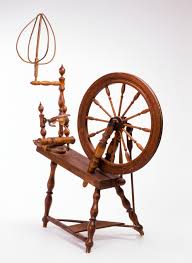

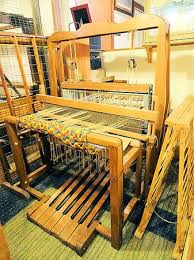
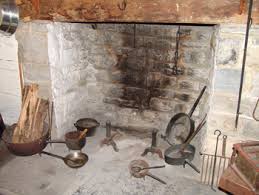
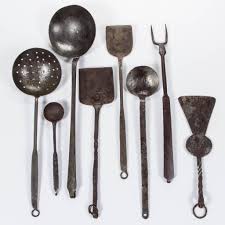







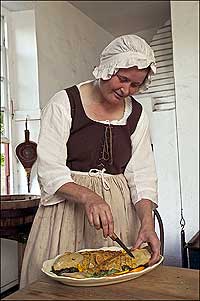
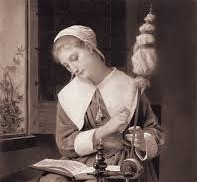
Comments